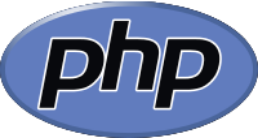Check out our Marketing, Creative and Development services to see how we can benefit your business!


ENTERPRISE RESOURCE PLANNING (ERP)
IMPROVE OR REPLACE YOUR OUTDATED SYSTEMS.
From after-sales to managing orders and sending customers delivery tracking details, we can improve your processes with ERP.
Reduce the amount of time and money that is spent on admin and get back to providing a top-quality service for your customers.
WEB APPLICATIONS & CLOUD TECHNOLOGY




What are you waiting for?
Get off to a flying start! The fund can offer grants for business and charity improvement projects that use external expertise and the financial support will remain the same. All you have to do is tell us your interested by filling out the form on this page.
Frequently Asked Questions
What is an Enterprise Resource Planning System?
Enterprise Resource Planning (ERP) is a type of software that helps businesses manage and automate various business functions, such as accounting, human resources, inventory management and customer relationship management. ERP systems typically integrate all of these functions into a single, centralised system, which allows businesses to more easily access, analyse and share data across different departments and locations. This can help businesses to improve efficiency, reduce costs and make better-informed decisions. Some of the main benefits of ERP systems include improved data accuracy, increased automation and better collaboration across departments.
Why is an Enterprise Resource Planning System important for my business?
Improved Data Accuracy: By integrating all of your business functions into a single, centralised system, an ERP system can help improve the accuracy of your data by reducing the risk of errors and inconsistencies.
Increased Automation: An ERP system can automate many business processes, such as inventory management, accounting and customer relationship management, which can save time and reduce the risk of errors.
Better Collaboration: An ERP system can help improve collaboration across different departments and locations by making it easier to access, analyse and share data.
Improved Decision Making: An ERP system can provide you with real-time data, analytics and reporting, which can help you make better-informed decisions.
Increased Visibility: An ERP system can provide you with a single source of truth, which can help increase visibility into all aspects of your business, making it easier to identify trends and issues that need to be addressed.
Better Resource Management: An ERP system can help you optimise your resources by automating many of the tasks associated with managing them, such as scheduling, inventory management and budgeting.
What are the benefits of an Enterprise Resource Planning System?
An ERP system can improve data accuracy and consistency by integrating all of your business functions into a single, centralised system. It can also increase automation, streamline business processes and eliminate data silos, leading to improved efficiency and productivity. Furthermore, An ERP system can improve collaboration across different departments and locations by making it easier to access, analyse and share data. It also helps in making better-informed decisions through real-time data, analytics, and reporting.
It can also increase visibility into all aspects of your business, making it easier to identify trends and issues that need to be addressed and optimise your resources by automating many of the tasks associated with managing them. Additionally, it can reduce costs by automating many business processes and it's designed to be flexible and adaptable to the changing needs of a business, allowing it to grow and expand easily.
Does my business need an Enterprise Resource Planning System?
Whether your business needs an Enterprise Resource Planning system depends on the specific needs of your business. An ERP system can be a powerful tool that can provide many benefits, such as improved data accuracy and consistency, increased automation, better collaboration, improved decision-making, increased visibility, better resource management, and cost savings. However, it's also important to consider the cost and complexity of implementing and maintaining an ERP system, as well as whether your business has the resources and expertise to effectively use an ERP system.
An ERP system can be especially beneficial for businesses that have outgrown manual or disparate systems, or those that are looking to improve efficiency, reduce costs, and make better-informed decisions. If your business is facing issues such as data silos, manual and time-consuming processes, lack of real-time data and reporting, or difficulties in compliance, an ERP system can help to solve those issues and streamline business operations.
What steps are involved in developing an Enterprise Resource Planning System?
A lot! Software application development involves a number of interconnected stages. The first stage is the conceptualisation and design of the application, which uses an iterative process that focuses on identifying the users’ needs, mapping these needs to features, and finally producing a prototype that helps to validate these features with potential users. The next stage is the implementation stage in which the code for the various components of the system is produced using an appropriate programming language. This stage also involves integrating the code with other required technology, including data access through an API and testing across multiple target devices. The final steps include launching and packaging the application into installable software bundles for personal use.
How long does it take to develop an Enterprise Resource Planning System?
That completely depends on the system you’d like us to develop, however, as a general rule of them: when we develop a new application, we first collaborate with you to define the goals of the project and discuss the information that will be included in it. Once we’ve established what the software should accomplish and how it will function, we start developing design prototypes. We collaborate with our clients throughout this process to make sure that we’re always achieving their goals and staying true to the design/content that they want.
In order to keep up with changing technology, we test all of our prototypes using an emulator that allows us to view your app on various platforms throughout development. We check for devices in use at the time of your build so that your application works correctly. In total, from start to finish, the entire cycle of design, testing, content creation and development takes around six months to launch and complete.

IMPROVE BUSINESS EFFICENCY WITH A CUSTOM ERP
Some of the main benefits of ERP systems include improved data accuracy, increased automation and better collaboration across departments.
Call us now or complete the contact form and we’ll get back to you.

RECENT NEWS

LATEST
Can I Just Film On My Phone?

LATEST
What Does Surge Actually Do (And Are We the Right Fit for You)?

LATEST
Is Video Content Really Worth It?
